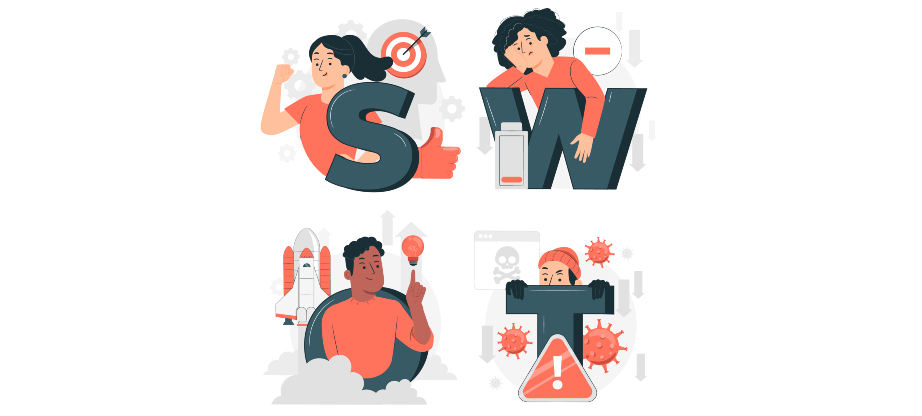Benefits of Incorporating UX Design Principles
 Consumers in the modern, digital era are spoiled for choice. It’s not enough to just have an internet presence nowadays, what with all the websites and apps people may choose from. Digital experiences that are both user-friendly and aesthetically pleasing will help businesses stand out in a crowded market and keep customers coming back.
Consumers in the modern, digital era are spoiled for choice. It’s not enough to just have an internet presence nowadays, what with all the websites and apps people may choose from. Digital experiences that are both user-friendly and aesthetically pleasing will help businesses stand out in a crowded market and keep customers coming back.
User experience design (UXD) is where it’s at in this scenario. Designing digital experiences that are user-friendly, interesting, and productive is what UX design is all about. Applying user experience (UX) design concepts to digital marketing initiatives can make a world of difference.
In this post, we’ll discuss how your digital marketing efforts can benefit from using user experience design concepts. We’ll go through how UX design can boost your website’s conversion rate, keep your visitors there longer, and earn their trust and loyalty. We’ll go over how to include UX design into your marketing strategy and share some pointers for making your digital experiences more user-friendly.
If you want to take your digital marketing to the next level, you should read on to learn why applying UX design concepts to your campaigns is a good idea.
UX Design: What Is It?
UX design, or user experience design, is the method of creating software, websites, and apps with the user in mind. Easy-to-use, interesting, and functional products are what UX designers strive towards.
User experience design (UXD) is interdisciplinary, requiring knowledge of user research, psychology, visual design, interaction design, and information architecture, among other areas. UX designers want to learn about their customers so they can make products that are easy to use and satisfying to the people who will be using them.
Parts of UX
Research, ideation, prototyping, testing, and iteration are all typical parts of the user experience design process. To better understand their users’ wants, habits, and problems, UX designers perform user research in the research phase. Surveys, in-depth interviews, and usability testing could all be a part of this investigation.
UX designers put their user research findings to use in the ideation phase by coming up with new directions to take the product in. User personas, user flows, and wireframes may all be required for this.
UX designers make a functional prototype to test and iterate on the product’s design in the prototyping phase. One approach is to make a clickable or working prototype that users can experiment with.
UX designers perform usability testing in the testing phase to gauge the design’s efficacy and locate potential problem spots. This may require either limited user testing or full-scale user research.
User experience designers then iterate on the design based on the feedback they received throughout the testing phase.
Principles of User Experience Design
UX designers are dedicated to making products that are simple to use and enjoyable to use because these are the core principles of user experience design. Principles of user experience design include:
- Product usability refers to how well a product can be used by its intended audience.
- Universal Accessibility means that the product can be used by anyone, regardless of their physical or mental capabilities.
- The product’s visual design should be clean and well-organized, with a unified aesthetic.
- The product’s information architecture should be such that content may be quickly and easily accessed.
- Design that puts the user’s preferences and goals first, rather than those of the designer or the company, is called user-centered design.
Tips for Including User Experience Design in Online Ads
Improving the user experience and thus the success of your digital marketing initiatives can be accomplished by adopting some UX design concepts. Follow these guidelines to better integrate user experience design into your digital marketing strategies:
The first step in integrating user experience design principles into digital marketing initiatives is to conduct user research. User research is a great way to learn more about your target audience’s wants, needs, and problems. You may utilize this data to improve your digital marketing strategy and make your campaigns more interesting and engaging for your target demographic.
Data can be a valuable tool for understanding how users interact with your digital marketing initiatives, so utilize it to guide design decisions. Observing how users interact with your product can tell you a lot about its success or failure. You can use this information to make smarter design choices and fine-tune your marketing.
Make your calls to action crystal obvious. In the digital marketing world, crystal-clear calls to action are essential. Making it obvious to users what you want them to do improves your conversion rates. Make your calls to action stand out from the rest of the page by using clear, succinct wording and design.
Pay close attention to usability: usability is an integral part of creating a good user experience. You should put user-friendliness at the forefront of your digital marketing campaign designs. Make the site easy to navigate and find the essential information quickly.
Because more and more people are seeing material on their phones and tablets, your website must be mobile-friendly. Make sure you’re using a responsive design that will work with a variety of screen sizes and resolutions for your mobile campaign.
Because digital marketing is an iterative process, testing and refining your campaigns regularly is essential for improving your outcomes. utilize split-testing software to compare two versions of a website’s design, copy, and CTAs before deciding which to utilize in your marketing initiatives.
Improving the user experience and increasing conversions are both possible goals when digital marketing is informed by UX design principles. Better advertisements may be made by beginning with user research, leveraging data to guide design decisions, making clear calls to action, emphasizing usability, optimizing for mobile, testing, and iterating.
Why User Experience Design Is Crucial For Digital Marketing
Businesses and organizations can reap several benefits from incorporating UX design principles into digital marketing initiatives. UX design is crucial for the success of digital marketing campaigns, and these 12 advantages will show you why.
- UX design’s goal is to boost participation by making products that are simple to use, straightforward, and aesthetically pleasing. Businesses may attract and retain customers by developing experiences that adhere to the principles of user experience design (UXD).
- Enhanced happiness among users: Customers are more happy and loyal when they have a good time using a product or service. Users are more likely to be satisfied with their experiences if they are tailored to their specific requirements and expectations, which may be achieved through careful UX design.
- Improved conversion rates UX design’s focus on the user experience often results in higher conversion rates. Users are more likely to complete the targeted action, such as completing a purchase or filling out a form if they have a positive experience navigating and interacting with a website or app.
- A positive user experience can have a significant impact on how consumers view your brand. A company’s brand and customer loyalty can benefit from a more satisfying interaction with the company.
- Site traffic rises when visitors enjoy their time on a website and return for additional pageviews. The result may be more people visiting the site, which is good for search engine optimization.
- UX design’s goal is to improve usability by making experiences more user-friendly. Businesses can increase their websites’ and apps’ usability by adhering to UX design principles, which make it simpler for customers to locate what they’re looking for and take the activities they want.
- Lower “bounce rates”: When consumers quickly leave a website or app without taking any action, we know they had a negative experience. To lower bounce rates, UX designers work to make websites more interesting and easy to navigate.
- Accessibility is another area where UX design can assist make digital products and services more accessible. UX designers may make products that are accessible to everyone by taking into account the requirements of people with impairments.
- Improved insight into customer behavior: Using UX design principles, companies may learn more about how customers use their products and services. As a result, designers can learn more about their users’ habits, likes, and dislikes, which can help them improve their products.
- Loyalty from customers is boosted when they have a good time using a product. When people use a product or service for the first time and have a positive experience, they are more likely to buy it again and tell their friends about it.
- The return on investment (ROI) of a company’s digital marketing efforts can be enhanced by focusing on the user experience. Better ROI can be attained via digital marketing by decreasing bounce rates, increasing conversion rates, and fostering brand loyalty.
- An edge in a congested market is possible with the help of user experience design. Experiences that are intuitive, interesting, and memorable help brands stand out from the crowd and keep customers coming back.
To compete in today’s digital landscape, businesses, and organizations must adopt UX design principles into their digital marketing strategies. Better brand recognition, customer retention, and digital marketing ROI may be attained when companies develop user-friendly, readily available, and aesthetically pleasing experiences.
What a SWOT Analysis Can Do for Your Digital Marketing User Experience
User experience (UX) design is increasingly important in digital marketing for gaining and keeping customers. User experience design, or UX, is learning about and catering to the preferences of a specific demographic. UX designers can benefit greatly from the use of the SWOT analysis.
SWOT analysis is an acronym for “strengths, weaknesses, opportunities, and threats” and is used in strategic planning. It is frequently employed to evaluate both internal and external elements that may have an impact on a company or other entity. UX designers can benefit from a more thorough grasp of their target demographic and the competitive landscape through the usage of SWOT analysis.
Recognizing the Good and Bad Points of Your Offering
The use of SWOT analysis in UX design can help you identify the pros and drawbacks of your product or service. You may improve your product’s user experience by focusing on its strong points while downplaying or eliminating its weaker ones.
SWOT analysis can be used to determine the advantages and disadvantages of a product or service, such as when creating a website for an online store. It makes sense to create experiences that highlight the high quality of your items if they have earned a reputation for them. The value of your items may need to be emphasized in the customer experience if they are quite high in price.
Recognizing Market Opportunities and Threats
The examination of strengths, weaknesses, opportunities, and threats is another advantage of employing SWOT in UX design. It is possible to create experiences that make the most of opportunities while minimizing risks if one takes the time to consider both possibilities.
When creating a website for a financial services firm, for instance, a SWOT analysis can be used to assess the market’s strengths and weaknesses. Experiences could be designed to feature a new service or product if the chance presents itself. Experiences could be designed to highlight the company’s unique value offer if there is a competitive threat.
The Value of SWOT Analysis in User Experience Design
Overarchingly, SWOT analysis serves UX designers by helping them better understand their users and the competitive landscape. Experience designers may create more powerful and interesting products by doing a SWOT analysis to determine the merits and shortcomings of their ideas.
To determine the possibilities and dangers facing a nonprofit organization, as well as the organization’s strengths and weaknesses, a SWOT analysis template could be used during the website design process. You may create events that demonstrate how the organization’s efforts have benefited others, highlight its distinctive value offer, and counteract the effects of competitors and other outside forces.
Conclusion
In conclusion, the effectiveness of your digital marketing initiatives can be greatly influenced by integrating SWOT analysis into the design of the user experience. Understanding the market’s SWOT allows designers to craft experiences that are both more effective and more engaging for their intended demographic.
Successful businesses and organizations often use SWOT analysis to inform design decisions that result in higher levels of consumer engagement, conversions, and loyalty. You may develop experiences that appeal to your target audience and deliver business results by evaluating the strengths and limitations of your product or service and capitalizing on opportunities while minimizing dangers.
Consider integrating SWOT analysis into your UX design process to boost the success of your digital marketing initiatives. Doing so can help you learn more about your target audience and their wants, requirements, and habits, which in turn will help you better serve them and develop your business.

